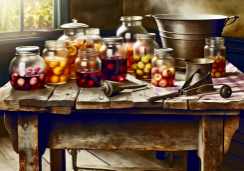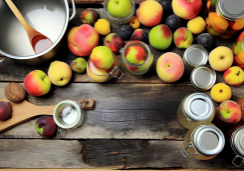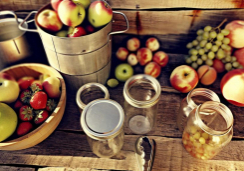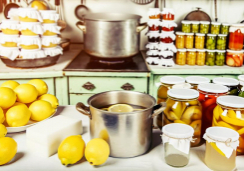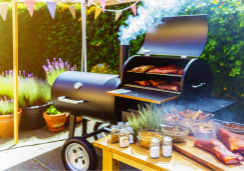Struggling With French Cuisine? Simplify With These Techniques
Imagine you've spent hours trying to recreate that exquisite beef bourguignon from your favorite French bistro, only to end up with a dish that's more stew than a symphony of flavors.
You're not alone in this culinary struggle; French cuisine, with its intricate techniques and precise flavors, can often seem daunting. However, simplifying doesn't have to mean sacrificing authenticity.
By focusing on fundamental skills like mastering the art of mirepoix, the base of many French dishes, you're already on your way to elevating your cooking.
Stick with me, and I'll share some tried and true methods that strip away the complexity of French cooking, making it accessible for anyone craving the elegance of France on their dinner plate.
Let's explore how you can transform your kitchen into a French chef's sanctuary with less fuss and more finesse.
Mastering Mirepoix Basics
To master the quintessential mirepoix, you must start by learning the classic ratio of two parts onions, one part carrots, and one part celery, forming the backbone of countless French dishes. As you embark on this culinary cornerstone, embrace the discipline of mise en place, ensuring all your ingredients are neatly prepared before you begin cooking.
Begin with your onions, carrots, and celery finely diced into uniform shapes. Precision is key; these small dice will cook evenly, melding their flavors harmoniously. The mirepoix basics aren't just about the vegetables themselves, but also about the size and consistency of your cuts. This attention to detail is what sets apart novice cooks from experienced chefs.
Crafting the Perfect Roux
Mastering the art of roux, a blend of equal parts flour and fat, is essential for thickening and enriching some of the most iconic French sauces. This fundamental skill is a cornerstone of French culinary education and a testament to the precision inherent in French cooking techniques. Creating a roux is a method that involves cooking the flour and fat mixture to achieve the desired color and flavor, ranging from blonde to brown to dark.
To start, choose your fat—butter is traditional, but oils or other fats work too—and melt it over medium heat. Gradually whisk in the flour, breaking it into small pieces to ensure a smooth consistency. Cook the mixture, stirring constantly. A blonde roux takes only a few minutes, while a darker roux requires patience, as it needs to cook longer to develop a deeper flavor.
Exploring Mother Sauces
Having honed your roux-making skills, you're now well-prepared to tackle the quintessential elements of French cuisine: the five mother sauces. These sauces aren't just recipes but a testament to the culinary artistry championed by legendary French chefs. They provide a foundation upon which countless French recipes are built.
Each mother sauce requires a specific cooking method, yet they all share a unifying complexity that can elevate any dish. Here's how each can stir your emotions:
- Béchamel: The comforting embrace of creamy dishes.
- Velouté: The velvety texture that whispers of sophistication.
- Espagnole: The rich, deep flavors that speak to a storied history.
Mastering these mother sauces involves more than just following a recipe; it's an immersion into the heart of French cuisine. The béchamel begins with a white roux, gently cooked until it whispers of nuttiness, before milk transforms it into a silky-smooth sauce. Velouté, a liaison of a light roux with stock, caresses your palate, while espagnole, with its brown roux and tomato purée, provides a robust foundation.
The tomate sauce, with its bright acidity, and the emulsified delicacy of hollandaise, complete the quintet, each sauce a cornerstone for an array of exquisite culinary creations.
Perfecting French Knife Skills
As you delve into the art of French cooking, sharpening your knife skills becomes as crucial as the blade itself, enabling you to craft dishes with the precision and elegance that this cuisine demands. French knife skills aren't just about chopping; they're about bringing out the flavors and textures that define iconic dishes like Coq au Vin or a delicate Sous Vide preparation.
Your journey to mastering these skills should begin with understanding the different cuts—julienne, batonnet, brunoise, and chiffonade—each serving a unique purpose in French cooking. For instance, mastering the brunoise cut, a form of (small dice), is essential for creating the perfect mirepoix, the flavor foundation of countless French recipes.
Achieving uniformity with the tourne technique won't only improve the visual appeal of your dishes but also ensure even cooking. Remember that the number 31 represents more than just a quantity; it reflects the meticulous nature of French cuisine, where every detail counts.
A sharp knife is your ally, and regular practice is your pathway to finesse. Attend French cooking classes, persist in your practice, and you'll soon find your knife gliding through ingredients, turning simple produce into culinary works of art.
Embracing En Papillote Method
Unlock the flavors and aromas of your favorite ingredients by learning the En Papillote method, a simple yet elegant technique for creating moist and aromatic dishes. This classic approach, often used in modern French cuisine, can form the basis of your culinary adventure, transforming you into a maestro of healthy and flavorful cooking.
Here's what you need to know to master the art of embracing en papillote method:
- Select the Star of Your Dish: Choose tender proteins like halibut or chicken breast, and pair them with a melody of vegetables and aromatics.
- Craft Your Culinary Parcel: Wrap your ingredients snugly in parchment paper, sealing in the juices and essence of each component.
- Bake to Perfection: Slide your culinary package into the oven and let the steam work its magic, infusing your dish with an array of sublime flavors.
Frequently Asked Questions
What Are the Techniques and Preparation of a French Cuisine?
You'll master French cuisine by perfecting mise en place, understanding roux basics, sautéing vegetables, deglazing pans, creating herb infusions, and learning pâté brisée essentials. Precision and preparation are your keys to success.
What Is the Most Difficult French Food to Make?
You'll find Duck Confit Mastery demanding, as it requires patience and skill. Macaron Perfection is elusive, with precise technique needed. Bouillabaisse Challenges abound, Soufflé Rising Techniques test you, while Croissant Layering and Pâté en Croûte are complex.
What Are the Techniques of Haute Cuisine?
Haute cuisine techniques include mastering mise en place, sous vide precision, chiffonade cutting, roux basics, consommé clarifying, and cooking en papillote. You'll create exquisite dishes with these skills.
Why Is French Cuisine so Complex?
French cuisine's complexity stems from its rich culinary tradition, meticulous ingredient sourcing, sophisticated flavor layering, diverse cooking methods, regional variations, and the critical importance of presentation. You'll find mastering it both challenging and rewarding.
Conclusion
Now you've got the essentials to master French cooking with ease. Remember, it's all about preparation—mise en place keeps you organized.
Hone those knife skills for impeccable cuts.
Dive into mirepoix, roux, and the mother sauces to build flavor foundations.
And don't forget the en papillote technique for a healthy, flavor-packed meal.
With practice, you'll turn your kitchen into a French culinary haven.
Bon appétit!




